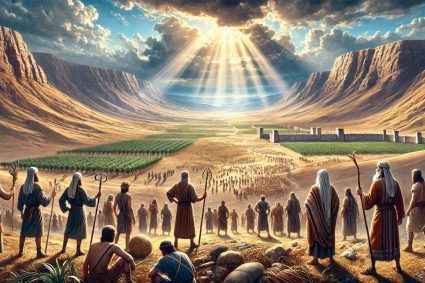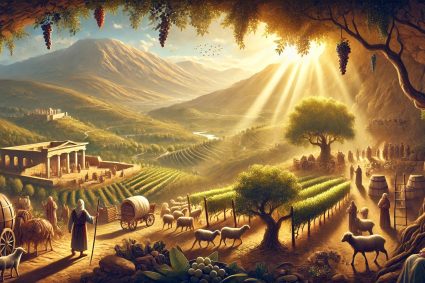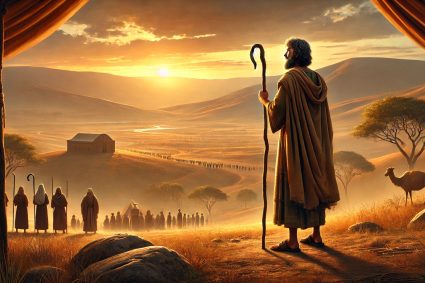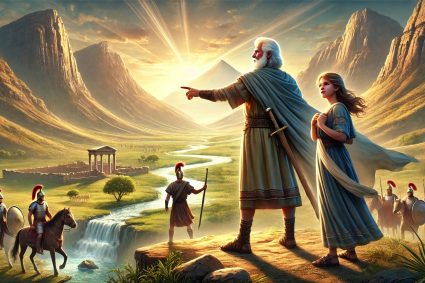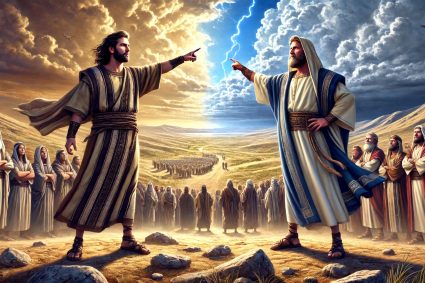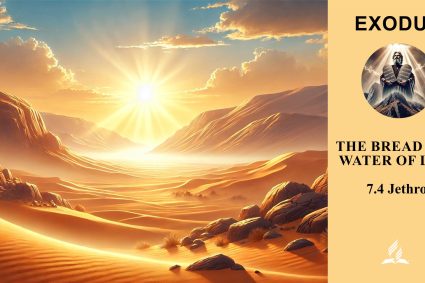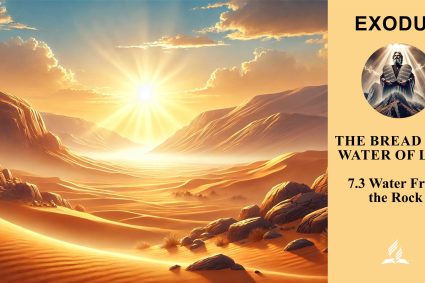Lesson 2.The Genesis Foundation | 2.3 Isaac’s Question: “Where is the Lamb?” | ALLUSIONS, IMAGES, SYMBOLS | LIVING FAITH
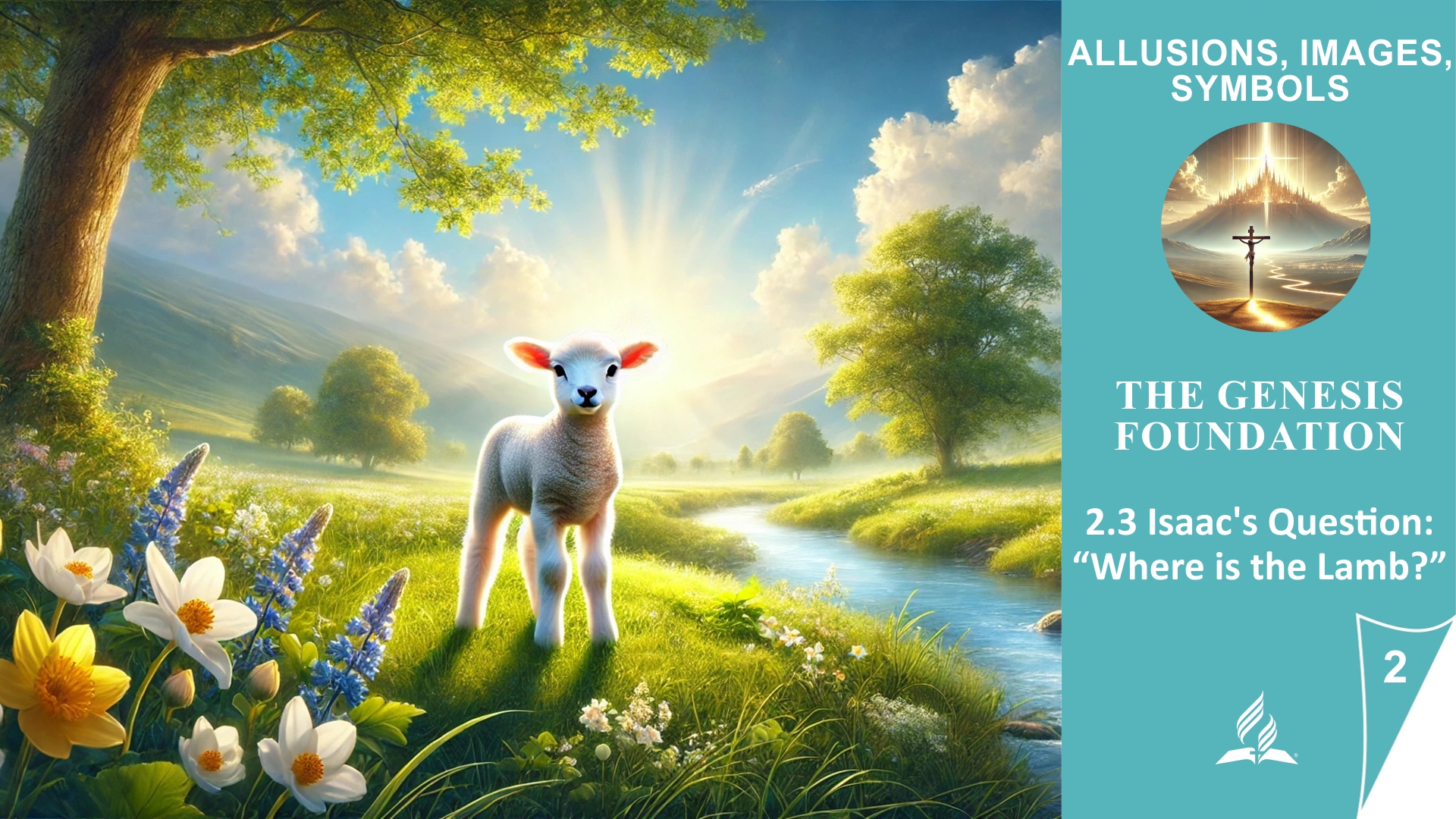

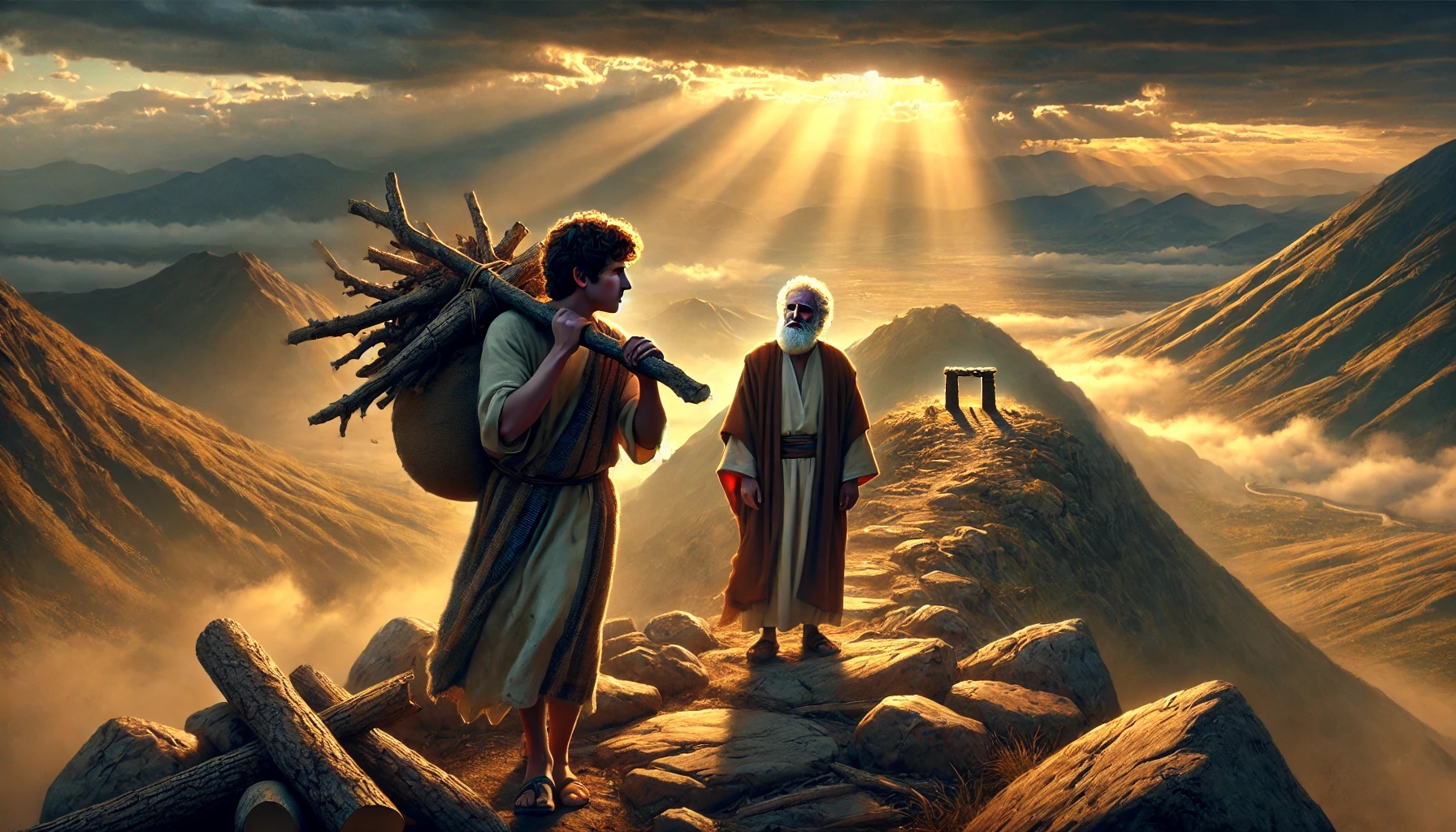
📘 Lesson 2 – Foundation Genesis
2.3 Isaac’s Question: “Where is the Lamb?”
“Where is the Lamb?” – The Question That Runs Through the Bible
🟦 Introduction – A Question That Runs Through the Bible
“Where is the lamb?” – This question, asked by Isaac on the way to the altar on Mount Moriah, is not just a childlike expression of curiosity or confusion. It is a prophetic question—one that threads through the entire Bible like a scarlet cord.
It is the first direct question in connection with a sacrifice. And although Abraham responded, “God Himself will provide the lamb,” the full answer remained initially incomplete.
In the Old Testament, the “lamb” is repeatedly hinted at—in the Passover, the sacrificial laws, the Psalms, and the prophets. Yet something always remains unfinished, an expectation.
Only in the New Testament, when John the Baptist sees Jesus and exclaims, “Behold, the Lamb of God,” does Isaac’s question begin to receive a clear answer. And in Revelation, in the throne room of God, it becomes central: the Lamb—slain and yet alive, the only one who is worthy.
This lesson invites us to follow Isaac’s question. Not just historically or symbolically—but personally. Where is the lamb for me? What does it mean that God provided the Lamb—and how does this truth change my life?
📖 Bible Study – From Mount Moriah to the Throne of Heaven
📌 Genesis 22:7–8 – The First Question, the First Lamb
On the way to Moriah, Isaac carries the wood for the sacrifice on his shoulders. His father, Abraham, walks beside him in silence. It is Isaac who speaks—with a question heavier than the wood itself:
“Father, we have fire and wood, but where is the lamb for the offering?”
This first mention of seh (Hebrew for “lamb”) is more than a detail—it points to a divine mystery. Isaac’s question highlights the tension between human sacrifice and divine provision.
📌 Exodus 12:3–13 – The Passover Lamb
Centuries later, in Egypt, the people of Israel are instructed to slaughter a flawless lamb in every household and mark their doorposts with its blood. This blood is a sign of protection—death passes over where the lamb was sacrificed.
An echo of Moriah. Again: a lamb as substitute. Life is preserved because a sacrifice is made.
📌 John 1:29–34 – The Lamb of God
When Jesus approaches the Jordan, John the Baptist proclaims with prophetic clarity:
“Behold, the Lamb of God who takes away the sin of the world!”
Here, Isaac’s question is directly answered. God Himself has provided the Lamb—not an animal, but His own Son. The Baptist sees it: the answer to Isaac’s question is now standing in front of him in the flesh.
📌 Revelation 5:5–10 – The Slain and Exalted Lamb
At the center of the heavenly vision stands the Lamb—slain yet alive. It is Jesus, the only one worthy to open the book with the seven seals. Why? Because He has redeemed people for God by His blood.
The Lamb is no longer at the altar—but on the throne. The story has reached its climax. Isaac’s question has found its ultimate answer.
✨ Spiritual Principles – Substitution, Sacrifice, and Hope
-
Substitution: The lamb dies so that the human may live. It takes our place—first symbolically at Moriah, then concretely at the cross.
-
Divine Provision: “God will provide for Himself the lamb.” – Abraham’s words were more than faith; they were prophetic. God provided, long before we understood.
-
Love and Judgment meet in the Lamb: Without sacrifice, there can be no mercy in judgment. Without the lamb, no reconciliation with God.
-
Worth through Blood: In Revelation 5, the Lamb is worthy—not through might, but through sacrifice. This is how God defines true rulership: through self-giving.
🧭 Everyday Application – What Does the Lamb Mean for You?
📌 Live under the blood of the Lamb.
Like Israel in Egypt: let your life be visibly marked by Christ—not by religious façade, but by true trust.
📌 Answer Isaac’s question for others.
People still ask today: Where is hope? Where is salvation? Point them to the Lamb—not to yourself.
📌 Trust God’s provision—even if you don’t yet see the ram.
Abraham was willing to let go. You too can believe: God will provide—even on the hardest paths.
📌 Celebrate the Lamb—daily.
Worship, prayer, communion—these are moments to honor the center of our faith: Jesus, the sacrificed Lamb.
✅ Conclusion – The Lamb Has the Final Word
Isaac’s question is a doorway that runs through all of Scripture: “Where is the lamb?”
God’s answer is clear, powerful, and eternal: “Here is my Son.”
From Moriah to Egypt, through the prophets to the cross, and into heaven itself—the same image confronts us:
A lamb.
A sacrifice.
A Savior.
And today, we stand on the other side of the story—with a clear view of the cross. The answer is here. The way is open.
💬 Thought of the Day
“Jesus is not the lamb we bring—He is the Lamb God gave.
That’s why our hope lies not in what we offer, but in what He offered.”
✍️ Illustration – “Where Is the Lamb?” – A Story of Loss, Love, and Hope
It was the third Sunday in November, and rain beat endlessly against the windows of the small hospice room. In one of the beds lay Anna—9 years old, delicate, with bright eyes that had seen far too much. Leukemia—for three years. The doctors had stopped using the word “healing.” Only “time” remained. A few weeks, maybe days.
Her father, David, sat at the window, staring into the grey. He hadn’t spoken in hours. The silence was loud. In his lap lay a children’s Bible, decorated with colorful pictures and a worn felt bookmark. Anna loved it when he read to her from it.
“Papa?” Her voice was soft but clear.
He turned to her. “Yes, sweetheart?”
“Can we read the story about the lamb again? The one with the dad and the boy who had to carry the wood?”
David swallowed. The story of Abraham and Isaac. He’d heard it often as a child, but now, with his daughter dying, it felt too big, too sacred, too close to his own reality.
Still, he nodded and began to read. Gently, slowly.
“And Isaac said to his father Abraham: My father! And he answered: Here I am, my son. And he said: Behold, the fire and the wood, but where is the lamb for a burnt offering?”
Anna interrupted. “Papa… did the boy know what was going to happen?”
David set the Bible on the blanket. He didn’t know. Maybe Isaac sensed that this was more than just a journey. Maybe he saw in his father’s eyes that this was no ordinary sacrifice.
“I think Isaac trusted his father,” he finally said. “And I think Abraham trusted God—even though he didn’t understand.”
Anna nodded slowly. “And the lamb came, right? In the end?”
“Yes,” said David. “God provided a lamb. Right on time.”
Two days later
David sat alone in the hospice chapel. The pew creaked beneath him. The candles flickered. He hadn’t told anyone he came. He didn’t even know if he wanted to pray.
A storm raged inside his chest. Questions. Doubts. Anger.
Where are you, God? Why my daughter? Why this child who trusted you so much?
He stared at the cross on the wall. And then a sentence stirred within him—not loud, not external, but clear.
“Where is the lamb?”
Isaac’s old question. But now it hit David personally. It wasn’t theological. It wasn’t historical. It was existential. Where is the lamb for my daughter? Where is hope—when nothing else helps?
He stood, trembling. Walked outside into the cold. The rain had stopped. Only fog hung over the cemetery next to the hospice.
Suddenly, he heard footsteps behind him. The hospice chaplain, Pastor Elias, stood beside him. A quiet man, with gentle eyes and a voice that was rarely loud.
“I’ve been looking for you,” Elias said softly.
David nodded.
The pastor paused. Then said, “You know, your daughter’s question the other day…”
“Which one?”
‘“Where is the lamb?’ – I heard her. I’ve wrestled with that question myself.”
David turned to him. “And? Did you find an answer?”
Elias looked out into the fog. “The question runs through the Bible. But it’s answered. Not at first. Not right away. But then Jesus comes—and John cries out: ‘Behold, the Lamb of God, who takes away the sin of the world.’”
David swallowed. He knew the verse. But in that moment, it wasn’t just a quote. It was a calling. A beam of light through the fog.
“It wasn’t an animal,” Elias said. “It was a person. A son. And his Father truly let him go. But he did it willingly—out of love.”
Three days later
Anna died in the night. Peacefully. In David’s arms. Her last words were a whisper:
“Papa… I saw the lamb.”
David wept. Not out of despair—but in reverence. Somehow, he knew: she hadn’t been alone.
Ten years later
David stood in a church. No longer as a broken father—but as a preacher. In his hands: the same children’s Bible, Anna’s Bible. Opened to Genesis 22.
“The question Isaac asked his father,” he began, “might be the most important question humanity can ask: Where is the lamb?
And the answer? It’s more than a theological truth. It’s a person. It’s a cross. It’s an empty tomb.
God has provided the lamb.
For Isaac. For Israel. For me. For Anna.
And for you.”


